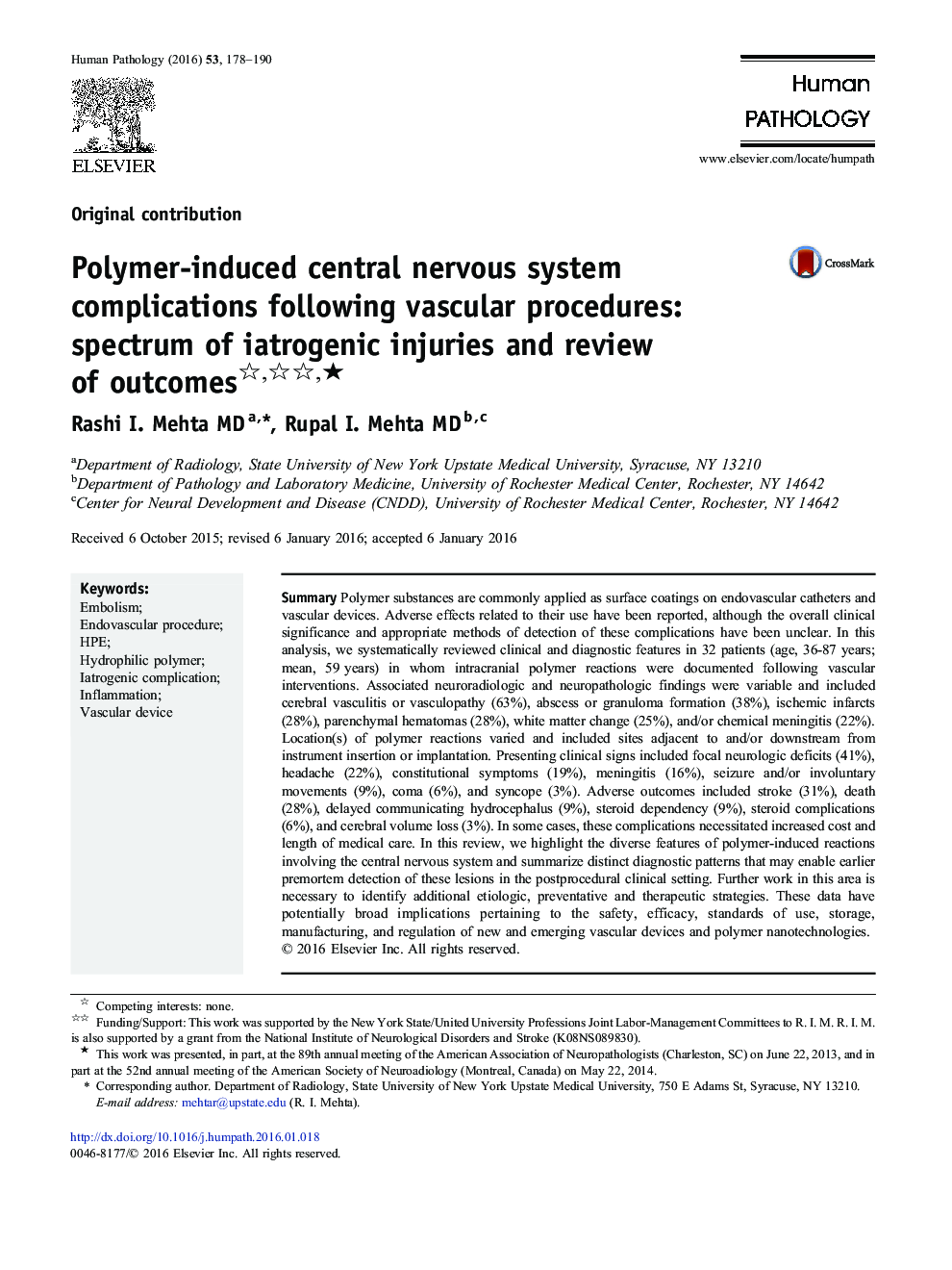| Article ID | Journal | Published Year | Pages | File Type |
|---|---|---|---|---|
| 4132378 | Human Pathology | 2016 | 13 Pages |
SummaryPolymer substances are commonly applied as surface coatings on endovascular catheters and vascular devices. Adverse effects related to their use have been reported, although the overall clinical significance and appropriate methods of detection of these complications have been unclear. In this analysis, we systematically reviewed clinical and diagnostic features in 32 patients (age, 36-87 years; mean, 59 years) in whom intracranial polymer reactions were documented following vascular interventions. Associated neuroradiologic and neuropathologic findings were variable and included cerebral vasculitis or vasculopathy (63%), abscess or granuloma formation (38%), ischemic infarcts (28%), parenchymal hematomas (28%), white matter change (25%), and/or chemical meningitis (22%). Location(s) of polymer reactions varied and included sites adjacent to and/or downstream from instrument insertion or implantation. Presenting clinical signs included focal neurologic deficits (41%), headache (22%), constitutional symptoms (19%), meningitis (16%), seizure and/or involuntary movements (9%), coma (6%), and syncope (3%). Adverse outcomes included stroke (31%), death (28%), delayed communicating hydrocephalus (9%), steroid dependency (9%), steroid complications (6%), and cerebral volume loss (3%). In some cases, these complications necessitated increased cost and length of medical care. In this review, we highlight the diverse features of polymer-induced reactions involving the central nervous system and summarize distinct diagnostic patterns that may enable earlier premortem detection of these lesions in the postprocedural clinical setting. Further work in this area is necessary to identify additional etiologic, preventative and therapeutic strategies. These data have potentially broad implications pertaining to the safety, efficacy, standards of use, storage, manufacturing, and regulation of new and emerging vascular devices and polymer nanotechnologies.
